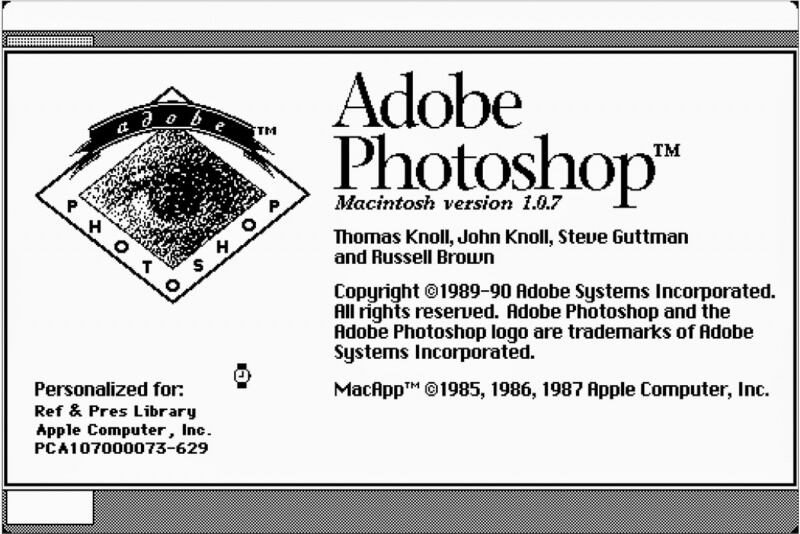A little background

Created in 1987, Photoshop began as a simple program written by Thomas Knoll, a PhD student at the University of Michigan. Knoll developed the software on his Macintosh Plus to display grayscale images on a monochrome monitor, a task that standard software at the time couldn't easily perform. This initial version was called "Display."
As Knoll realized the broader potential of the program, he took a six-month break from his studies to collaborate with his brother, John Knoll, a visual effects artist at Industrial Light & Magic.
Together, they transformed the basic tool into a more comprehensive image-editing application. They briefly renamed the program "ImagePro," but soon discovered that the name was already trademarked. Eventually, Thomas settled on a new and enduring name: "Photoshop."
The first distribution of Photoshop didn't come through traditional software channels. Instead, the brothers struck a deal with a scanner manufacturer called Barneyscan, bundling the program with the company's scanners. Approximately 200 copies were distributed in this early form, labeled as Barneyscan XP.
Also read: The unlikely story of the very first Photoshop image
Recognizing its commercial potential, John Knoll demonstrated the software to both Apple and Adobe. While Apple was impressed, it was Adobe that saw its market potential and purchased a license to distribute the software in September 1988. After further refinement, Adobe Photoshop 1.0 was released in February 1990, exclusively for Macintosh computers.
Photoshop would go on to revolutionize digital imaging. Its influence extends far beyond its original intent. It became a foundational tool in industries ranging from advertising and fashion to journalism and cinema. The software introduced concepts like non-destructive editing, layers, masks, and filters that reshaped how digital images were created and perceived.
Culturally, the verb "to Photoshop" has become synonymous with digital alteration itself, an indicator of its deep integration into public consciousness, after paving the way for creative professionals and hobbyists alike to manipulate images with unprecedented ease and precision.